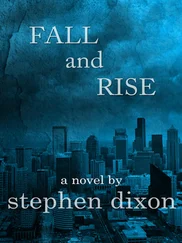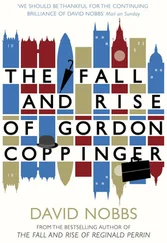WHILE GOVERNMENT AND intelligence officials tried to get a handle on bin Laden before and after his February 1998 fatwa, average Americans remained largely ignorant of him and his followers. For one thing, there was bin Laden’s country of residence. Among journalists, Afghanistan had long been shorthand for any subject too far away for many Americans to care about.
When bin Laden’s name did appear in the American media, journalists focused mainly on his wealth. Usually he’d be described something like this: “[A] multimillionaire Saudi dissident whom the State Department has labeled ‘one of the most significant financial sponsors of Islamic extremist activities in the world today.’” Rarely did news accounts suggest that he might pose a direct threat to the United States as a terrorist leader, although a 1997 article in the New York Times tiptoed in that direction, noting that “recent reports” indicated that bin Laden had paid for a house in Pakistan that sheltered the mastermind of a 1993 World Trade Center truck bombing that killed six people and injured more than a thousand. But in general, at the time of the fatwa it would have been easy for a well-read American to claim little knowledge and less concern about bin Laden. Before he issued his declaration of war, his name had appeared in a grand total of fifteen articles in the New York Times , sometimes only in passing . Most other American news organizations mentioned him less, if at all.
Even bin Laden’s February 1998 fatwa against Americans passed unnoticed by most U.S. news organizations. The first clear reference in the Times came nearly six months later, as an offhand line in a story about a search for suspects in the bombings of the American embassies in Kenya and Tanzania: “Earlier this year, Mr. bin Laden and a group of extremist Muslim clerics called on their followers to kill Americans.” The story quickly moved on, mentioning only that bin Laden was the prime suspect in the 1996 bombing of Khobar Towers, an apartment complex in Saudi Arabia, that killed nineteen American airmen. However, a New York Times article in 1999 about the embassy bombings reversed course, sharply downplaying the apparent threat he posed. The story read, in part:
In their war against Mr. bin Laden, American officials portray him as the world’s most dangerous terrorist. But reporters for The New York Times and the PBS program “Frontline,” working in cooperation, have found him to be less a commander of terrorists than an inspiration for them. Enemies and supporters, from members of the Saudi opposition to present and former American intelligence officials, say he may not be as globally powerful as some American officials have asserted.
Yet in the years before 9/11, a few journalists offered darker perspectives about bin Laden’s potential ability to violently carry out his fatwa. The Washington Post reporter Walter Pincus wrote a pointed story two days after bin Laden’s 1998 declaration of war that cited a CIA memo that said U.S. intelligence officials took the threat seriously. Another prescient outlier was ABC’s John Miller, who interviewed bin Laden in May 1998 at a training camp in Afghanistan. In the interview, bin Laden repeated his fatwa and said he would not distinguish between civilian and military targets. Writing about it later, Miller ruefully acknowledged that his interview barely registered with the public: “[W]e had our little story, and a few weeks later, in a few minutes of footage, Osama bin Laden would say ‘hi’ to America. Not many people would pay attention. Just another Arab terrorist.”
One scholar who took serious note of the fatwa was Bernard Lewis, an eminent if controversial intellectual who studied relations between Islam and the West and coined the phrase “clash of civilizations.” Writing in 1998 in Foreign Affairs magazine, Lewis concluded:
To most Americans, the declaration [by bin Laden] is a travesty, a gross distortion of the nature and purpose of the American presence in Arabia. They should also know that for many—perhaps most—Muslims, the declaration is an equally grotesque travesty of the nature of Islam and even of its doctrine of jihad … . At no point do the basic texts of Islam enjoin terrorism and murder. At no point do they even consider the random slaughter of uninvolved bystanders. Nevertheless, some Muslims are ready to approve, and a few of them to apply, the declaration’s extreme interpretation of their religion. Terrorism requires only a few.
Lewis’s warning went largely unheeded.
In the summer of 2001, not everyone in the United States felt confident in the state of the nation, but many relished, or took for granted, the privileges of life in the last superpower at the dawn of the twenty-first century. They had enjoyed the longest uninterrupted economic boom in the nation’s history, and the spread of American culture, political ideas, and business interests to the world’s farthest reaches seemed destined to continue indefinitely. Almost none lost sleep over threats emanating from a cave in Afghanistan. A Gallup poll taken on September 10, 2001, found that fewer than 1 percent of Americans considered terrorism to be the nation’s No. 1 concern.
But they didn’t know that a countdown had already begun. Nineteen bin Laden devotees, radicalized young Arab men living in the United States, awoke on September 11, 2001, determined to fulfill the fatwa. In twenty-four hours, the poll results would change, along with everything else.

CHAPTER 1
“QUIET’S A GOOD THING”
September 10, 2001
CAPTAIN JOHN OGONOWSKI
American Airlines Flight 11
“Dad, I need help with my math!”
John Ogonowski’s eldest daughter, Laura, called out to her father the second he stepped inside his family’s farmhouse in rural Dracut, Massachusetts.
“Laura!” yelled her mother, Margaret “Peg” Ogonowski, in response. “Let him walk in the door!”
Fifty years old, six feet tall and country-boy handsome, John gazed at his wife and sixteen-year-old daughter. His smile etched deep crinkles in the ruddy skin around his blue eyes. Dinner hour was near, and Peg suspected that John felt equal parts tired and happy to be home. As darkness fell on September 10, 2001, he’d just driven from Boston’s Logan International Airport after piloting an American Airlines flight from Los Angeles. A day earlier, he’d flown west on American Flight 11, a daily nonstop from Boston to Los Angeles.
After twenty-three years as a commercial pilot, John’s normal routine upon returning home was to go directly to the master bedroom and strip out of his navy-blue captain’s uniform with the silver stripes on the sleeves. He’d pull on grease-stained jeans and a work shirt, then head to the enormous barn on the family’s 130-acre farm, located thirty miles north of Boston, near the New Hampshire border. Quiet by nature, content working with his calloused hands, John inhaled the perfume of fresh hay bales and unwound by tackling one of the endless jobs that came with being a farmer who also flew jets.
But on this day, to Peg’s surprise, John broke his routine. Changing clothes and doing chores would wait. Still in uniform, he sat at the kitchen counter with Laura and her geometry problems. “Let’s remember,” he often told his girls, “math is fun.” They’d roll their eyes, but they liked to hear him say it.
Homework finished, the family enjoyed a dinner of chicken cutlets, capped by John’s favorite dessert, ice cream. Also at dinner that night were Peg’s parents, visiting from New York; his father’s brother Al, who lived nearby; and their younger daughters Caroline, fourteen, and Mary, eleven.
Читать дальше













